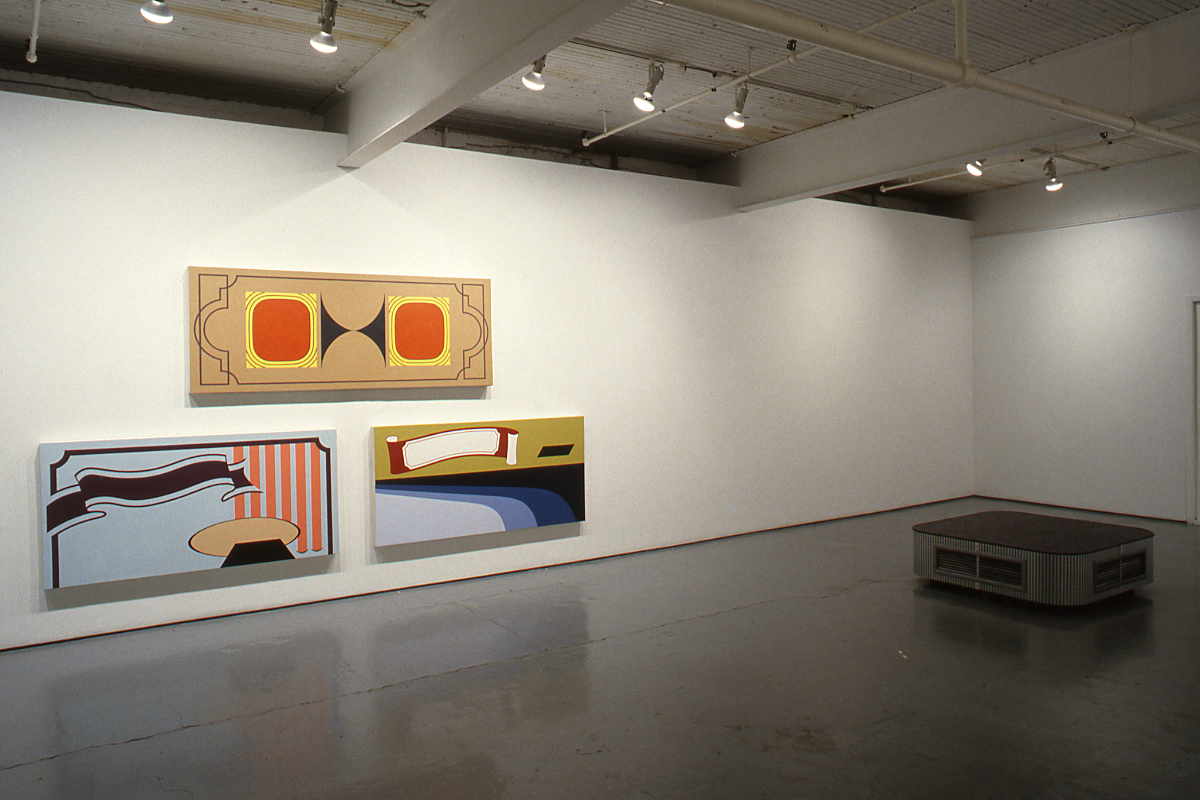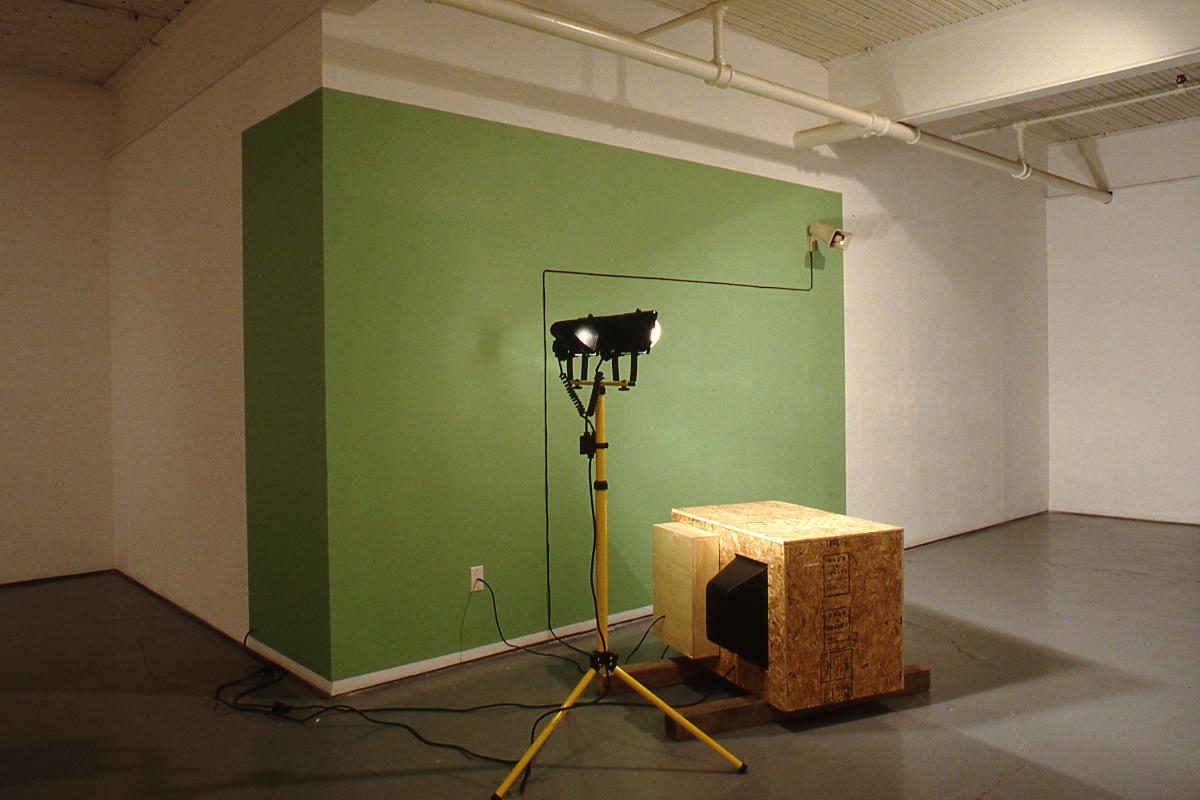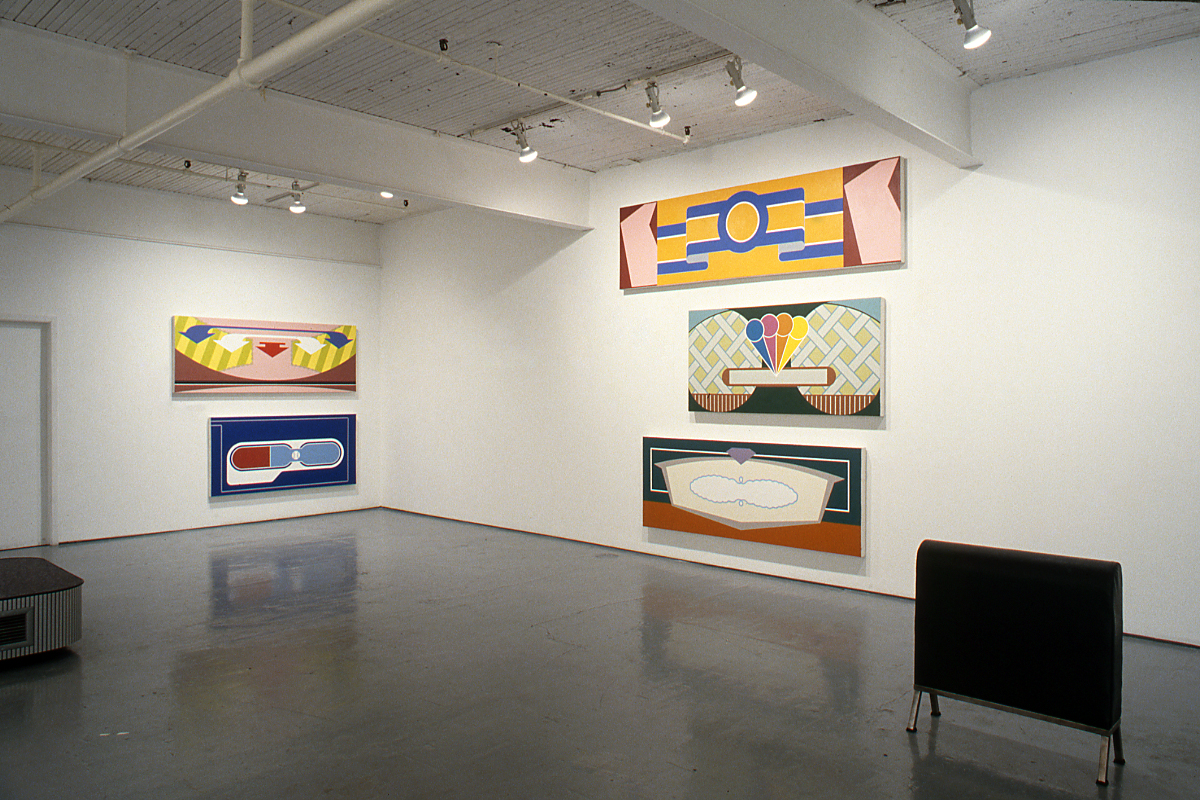Main Gallery:
An exhibition of paintings by Toronto artist Eric Glavin opens on May 27 at 8pm and continues through July 3, 1993.
Eric Glavin works with a palette of shapes and colours culled from the advertising and signage which constitute the visual language of the everyday. The scale of his paintings make them signs-of-sorts--reminiscent of those which adorn storefronts everywhere. The considerable thickness of his stretcher frames creates a subtle physicality, further implying the structure of commercial signage. Unlike most signage, however, the paintings contain no textual elements, relying instead upon the vague familiarity of the formal elements themselves.
Yellow Pages, Maxi Pads, Haagen Daaz, high school year books, newspaper boxes, pornography shops, tractor trailer and tour bus graphics--Glavin has drawn upon the broadest possible range of references from the increasingly populous urban landscape. The paintings incite and rely on the audience's familiarity to this wide variety of incongruous combinations. The work reproduces the vernacular of street level signs in the slick manner of high-end commercial advertising.
Rubber moulding, aluminum air grills, laminate siding, and the blue-grey low pile carpeting of a million office complexes all come together as one vaguely utilitarian platform in one of Glavin's sculptural works. His sculptures mimic furnishings in malls and lobbies and question the purposeful functionality of such objects. These works--like the green, mock-leather furniture-thing--allow Glavin to address the blandness of functional materials and design.
Glavin formally alters and reassembles appropriated shapes, and by skewing their recognition, creates abstracted representations of the familiar in a manner not too familiar. These paintings and sculptures nudge us with recognition, but are sufficiently subtle to remind us how easily and rapidly we become acclimatised to an expanding barrage of visual surplus.
Brochure Text:
During the 1985/86 season, the National Hockey League introduced advertising to the inner boards of hockey rinks. At the time, it stood out as a vulgar introduction of commerciality into a fast and graceful environment. Ten years later, these same eyesores are barely noticeable. We become accustomed to things we cannot change adapting to what was once an intrusion.
Eric Glavin's paintings and sculptures consider similar perceptual processes. He works with a palette of shapes and colours culled from the advertising and signage which constitute the visual language of the everyday. The scale of his paintings make them signs-of-sorts reminiscent of those which adorn storefronts everywhere. The considerable thickness of his stretcher frames creates a subtle physicality, further implying the structure of commercial signage. Unlike most signage, however, the paintings contain no textual elements, relying instead upon the vague familiarity of the formal elements themselves.
Yellow Pages, Maxi Pads, Haagen Daaz, high school year books, newspaper boxes, pornography shops, tractor trailer and tour bus graphics--Glavin has drawn upon the broadest possible range of references from the increasingly populous urban landscape. The paintings incite and rely on the audience's familiarity to this wide variety of incongruous combinations. The work reproduces the vernacular of street level signs in the slick manner of high-end commercial advertising. They recall strategies of collage--from Modernism to cyber-graphics --by putting into tension the disparate sensibilities of found popular imagery and sophisticated design.
Rubber moulding, aluminium air grills, laminate siding, and the blue-grey low pile carpeting of a million office complexes all come together as one vaguely-utilitarian platform in one of Glavin's sculptural works. His sculptures mimic furnishings in malls and lobbies and question the purposeful functionality of such objects. These works --like the green, mock-leather furniture thing allow Glavin to address the blandness of functional materials and design.
Glavin formally alters and reassembles appropriated shapes, and by skewing their recognition, creates abstracted representations of the familiar in a manner not too familiar. These paintings and sculptures nudge us with recognition, but are sufficiently subtle to remind us how easily and rapidly we become acclimatised to an expanding barrage of visual surplus.
- John Massier



